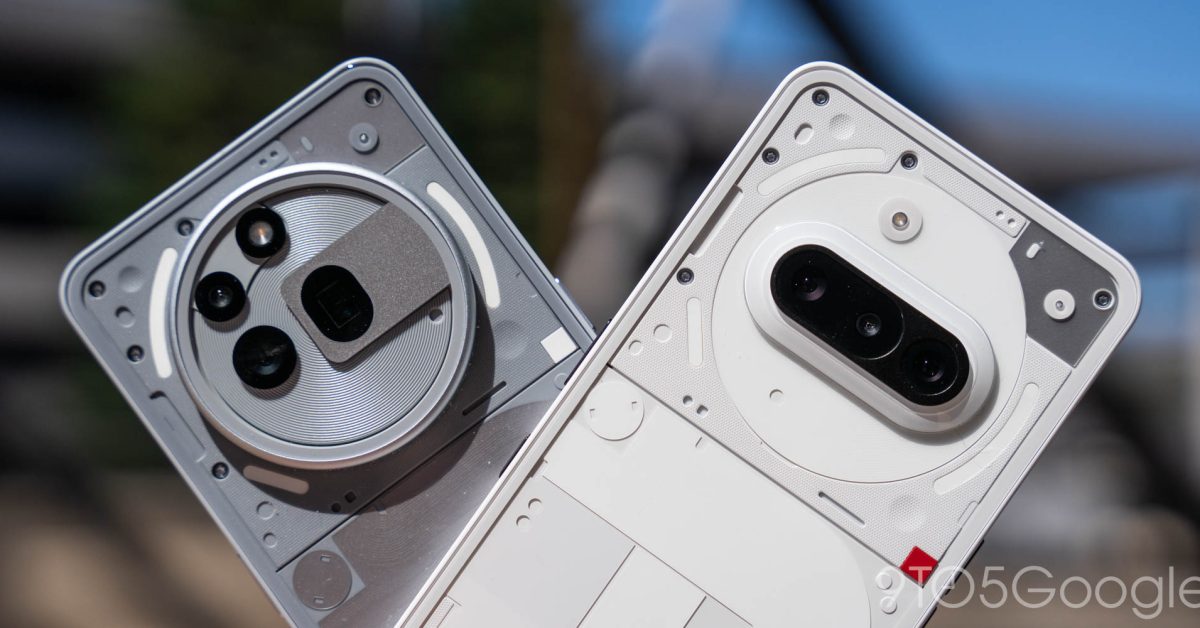
Contents

The Nothing Phone (2a) was one of my favorite phones of 2024, combining an excellent price point with a really good overall experience. Now, the Nothing Phone (3a) series has arrived and after using both devices, I think the company has nailed it yet again, but I also think there’s a clear choice for customers.
Quirky designs and upgrades
A big aspect of Nothing’s appeal has been in hardware design, so let’s start there. The Nothing Phone (3a) is an evolution of the Phone (2a)’s design, cleaning up the transparent back design and making it pop more than it did. The blue color is easily the best of the bunch, but the white color of my review unit outshines the black color that was Nothing’s primary push last time around. The new camera design invokes Pixel vibes too, which I rather like. The contrast of the black buttons on the white Phone (3a) also just look fantastic. I’ve got a big complaint about the buttons, but we’ll get to that in the software section.





Then, there’s Phone (3a) Pro. The overall look is basically the same, but the camera module is gigantic and funky looking. I’m not a huge fan of it from an aesthetic point of view alone, but the ergonomics make it even worse because that giant protrusion isn’t very comfortable in the hand as it’s just a bit too low to help with grip.
The hardware as a whole is improved across the board this year, though. The backplate ditches fingerprint-prone plastic for glass, and the plastic frame still feels sturdy and durable. The Phone (3a) feels unarguably better in my hands than the Pro, with its weight being much better balanced and, again, that camera bump just not getting in the way.





Under the hood, upgrades include moving to the Snapdragon 7 Gen 3 chip which runs fairly cool, and held up through daily use without breaking a sweat. It’s fairly fast paired with 8GB of RAM, though it’s not impossible to slow it down. The longer I’ve been using Phone (3a), the more examples of bits of lag or hiccups I’ve been finding. It’s far from slow, and it’s still an upgrade over last year, but these phones are not quite flagship-tier. Personally, I’d have rather seen Nothing adopt a better MediaTek chip than shell out the money for a Snapdragon. For the same overall cost, we probably could have gotten a faster phone.
“Glyph” lights are still in place on the back of the device too but, honestly, these just feel like more and more of a gimmick. Nothing still hasn’t found a “killer app” for this feature, and three generations in, I still find myself forgetting its there, as it never really comes in handy.
The other big upgrade to the hardware this year is the display. It’s a lot brighter, solving one of the bigger complaints I had about Phone (2a) last year. Indoors and out, the display holds up really well to whatever conditions I’ve thrown at it, something I’ve appreciated as the Spring season has brought my precious daylight back.

Nothing’s software experience rivals the Pixel
As per usual though, my favorite thing about using a Nothing Phone is the software, and Nothing OS 3.1 just keeps that at the top of my mind.
Nothing’s Android skin is clean and well-optimized, to the point where it often feels more stable than a Pixel does. It also tends to deliver a lot more features than Google does, much like the early days of OnePlus. You’ll get more customizations on the homescreen (including icon packs), support for lock screen widgets, and more. Yet, it also feels familiar for someone who’s most comfortable on a Pixel. Quality of life things like biometrics not fighting each other, useful little shortcuts, and other little tiny things just add up to an experience I actually enjoy and don’t feel like I have to change to suit my preferences. For those who have never felt quite at home on a Pixel, Nothing’s handful of added features and customizations might actually make the experience more appealing too.
But I’m also not huge on where the experience is going.
Nothing is trying some new ideas as of late, and some are good. The revamped Quick Settings with resizeable tiles are excellent. But the new “Smart” app drawer layout is just a carbon copy of one of the worst aspects of iOS, the “App Library.” I’m glad it’s not the default, but I’m not sure I like the idea of Nothing just pulling ideas (and bad ones at that) from others. This is a brand I’ve come to appreciate largely because it tends to find unique solutions and interesting takes on features.




A perfect example of that, though, is Nothing’s first big leap into the AI race. “Essential Space” is a new feature found on the Phone (3a) series that, outside of Google’s AI tools, is one of the few compelling ideas I’ve seen. The “Essential Key” on the side of the device takes a screenshot (or picture) which you can then add a voice note to by holding down on the button. As the app gathers these items that you save, it generates reminders, to-do lists, and more.
Essential Space is a really cool idea, but it’s one that I’m struggling to pull into my daily life.
I think that’s largely because it’s not very predictable. Like many AI features, Essential Space is open-ended, promising to do… something with whatever you give it. As such, it takes a while to find any actual use case for the app. The best use case I’ve found thus far was one I just randomly stumbled into. While attending a concert I purchased parking time, and take a screenshot with Essential Space of the receipt and the time allotment. That was more so I’d have something easy to find later, as Essential Space screenshots are separate from regular ones, but what I was happy to see what several hours later when I got a reminder that the parking time was ending. That’s really useful!




In my head, Essential Space is like a more purposeful version of Pixel Screenshots. Where Google’s app benefits from having access to every screenshot you’ve taken, Essential Space is more thoughtful. You get to pick what goes into it, making it, if nothing else, good for just organizing your captures.
I want to see this feature grow, but I think it needs two things to do that. First, a better use case. With its early users, Nothing should pull some particularly good use cases to make a better pitch. The app itself should also offer some suggestions. Nothing has plans for some more features with Essential Space too, such as “Flip to Record” which can record and then summarize audio when you simply flip the phone on its face. Secondly, it needs to remain affordable. There’s evidence that this app might cost as much as $120/year, which is just far too much for what it delivers. I’d maybe pay $20-30 per year for this functionality, but not $10/month. Moving the processing locally could help there, as it’s all currently done in the cloud. But, with Phone (3a) being a budget device without a ton of power, we might have to wati for Phone (3) for that version of this app.

But, to circle back to an issue, the Essential Key was poorly thought out in my eyes. The button’s placement directly below the power button leads to near-constant accidental presses. It should be towards the top of the device to avoid this because, right now, it’s more annoying than it’s actually worth.
Out of the box, Nothing Phone (3a) and Phone (3a) Pro run on top of Android 15. They’ll get 3 years of major Android OS updates and 6 years of security updates.
A capable camera
Budget phones often fail on the camera, but Nothing has done a great job with the Phone (3a) series. Last year’s Phone (2a) was fine in terms of its camera output, but it was nothing special. This time around, there’s a clear improvement.


Phone (3a) has a solid camera, with a 50MP Samsung sensor for its main shooter. It occasionally struggles in lower light or with processing decisions, but I’ve been happy with it on the whole. Shots are punchy and crisp, and motion doesn’t throw things off too bad. The addition of a 2x telephoto lens (on a 50MP Samsung sensor) solves my biggest complaint, offering just that bit of extra range to get the shot you want. It’s a good camera, even if it’s not totally perfect.
Full-size samples from Nothing Phone (3a)
Phone (3a) Pro, meanwhile, essentially pitches its entire existence on the camera. It has a different, slightly better 50MP main sensor from Samsung. A better 50MP front-facing camera. And, finally, a periscope lens on its 50MP Sony camera used for telephoto shots for… 3x optical zoom. I’m just not sold on this being worth the upgrade, or the giant camera bump. Shots are a little bit better, yes, and the extra range on the zoom is nice too, but none of it is meaningfully better. The selfie camera is where I found the biggest improvement, but both still struggle in anything outside of perfect lighting.
These are mid-range phones, so camera improvements can only go so far, and I’m just not sure Nothing delivered enough to separate the two. But the generational improvements are there, and both offer solid shooters overall.
Full-size samples from Nothing Phone (3a) Pro
The battery life is perfectly fine
The 5,000 mAh battery inside of both of these devices is average in size, and average in endurance. I’m finding that the battery life tends to be easily a full day with change to spare. I’ll go to bed with around 20-40% remaining on average use, which is a pretty big range. I’ve never fully killed either of these devices in a single day (including on a flight home from Spain, which came out to be a 23-hour day), but I find they drain just a bit faster than I was expecting, especially compared to the prior generation.
Thankfully, that’s far from a problem, as charging is very quick. While there’s no “SuperVOOC” or other crazy fast charging methods, 50W USB-C PD charging is more than sufficient. On days I felt I was running low, I could plug into a decent charger and get a 25% boost in what feels like just a few minutes. It’s a shame there’s no included charger (and that the included cable is downgraded), but the charging situation here is very good.

So wait, how are these phones different?
As we wrap things up here, something I want to circle back to is how these phones actually differ. Because… they really don’t.
Nothing Phone (3a) and Phone (3a) Pro are identical phones in nearly every way. The same display. The same battery. The same chipset. The same memory and storage. The same… everything. The only differences come down to the camera. Rather than diving into that, I’ll just share a comparison table that Nothing itself provided:
| Phone (3a) | Phone (3a) Pro | |
| Performance | ||
| Processor | Qualcomm Snapdragon 7s Gen 3 | Qualcomm Snapdragon 7s Gen 3 |
| Clock speed | Up to 2.5 Ghz | Up to 2.5 GHz |
| Technology | 4 nm | 4 nm |
| Core count | 8 | 8 |
| Benchmark (Antutu v10) | 825,564 | 825,564 |
| Camera | ||
| Main camera | 50 MP (Samsung GN9 – DL)F1.881/1.56″ | 50 MP (Samsung GNJ)F1.881/1.56″ |
| OIS | ✓ | ✓ |
| Auto focus | Contrast detection/PDAF | Contrast detection/Dual pixel PDAF |
| Full well capacity | 30Ke- | 60Ke- |
| Telephoto | 50 MP Telescope Lens (Samsung JN5) | 50 MP Periscope Lens (Sony LTY-600) |
| Ultra-wide camera | 8 MP (Sony IMX355)120.2° FOV | 8 MP (Sony IMX355)120.2° FOV |
| Front camera | 32 MP (Samsung KD1) | 50 MP (Samsung JN1) |
| Image signal processor (ISP) | Spectra Triple (12-bit) | Spectre Triple (12-bit) |
| Display | ||
| Size | 6.77″ | 6.77″ |
| Bezel width | 2.3 mm | 2.3 mm |
| Display technology | AMOLED LTPS flexible | Panda Glass | AMOLED LTPS flexible | Panda Glass |
| Refresh rate | 30-120Hz | 30-120Hz |
| Always-on display | 30 Hz | 30 Hz |
| Peak brightness | 3,000 nits | 3,000 nits |
| High brightness mode | 1,300nits | 1,300nits |
| Typical brightness | 800 nits | 800 nits |
| Pulse Width Modulation | 2160 Hz | 2160 Hz |
| Battery | ||
| Battery size | 5,000 mAh | 5,000 mAh |
| Fast charging | 50 W | 50 W |
| Miscellaneous | ||
| IP Rating | IP64 | IP64 |
| Dimensions | 77.50mm x 163.52mm x 8.35 mm | 77.50mm x 163.52mm x 8.90 mm |
| Weight | 201 g | 211 g |
| NFC | ✓ | ✓ |
| FeliCa support | ✓ | – |
Final Thoughts
Great value, but there’s an obvious winner
Nothing positioned its “a” series on value, and I think the Phone (2a) absolutely nailed it. It was one of my favorite phones of 2024, and I think Phone (3a) is a worthy follow up. For $379, it delivers welcome upgrades without compromising the quality or value.
At $459, though, Nothing Phone (3a) Pro is a bit of a different story in my eyes.
Last year, I really struggled to see why the Nothing Phone (2a) Plus existed and, honestly, I’m in the same boat for the “Pro.” I’m not sure who this product is for because, at the end of the day, you’re not getting $80 worth of improvements out of this “upgrade.”
As such, my verdict is clear. The Nothing Phone (3a) series delivers an absolutely stellar pair of smartphones, perhaps some of the best in the industry, but the Phone (3a) is the only one you should probably buy.
Unfortunately, these are still very much phones not meant for US buyers. The “Beta Program” makes it possible to buy Phone (3a) and Phone (3a) Pro in the States, but you’re going to lack band support on some networks. I can’t recommend either to US buyers, but they are fun to use, and I hope both Phone (3) and Phone (4a) make official debuts in the US.
- Nothing Phone (3a) at Nothing.com
- Nothing Phone (3a) Pro at Nothing.com

Follow Ben: Twitter/X, Threads, Bluesky, and Instagram
Add 9to5Google to your Google News feed.
FTC: We use income earning auto affiliate links. More.

What’s your reaction?
Love0
Sad0
Happy0
Sleepy0
Angry0
Dead0
Wink0
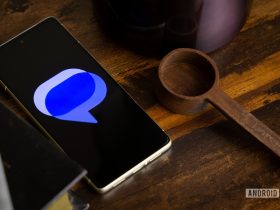
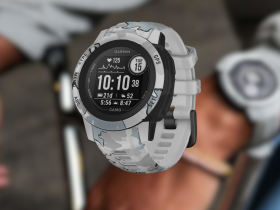
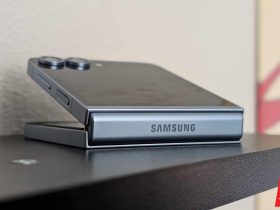

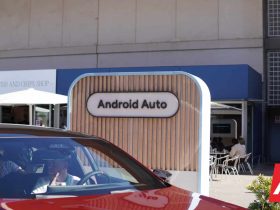

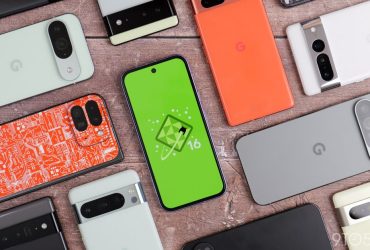
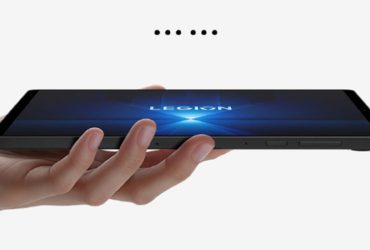
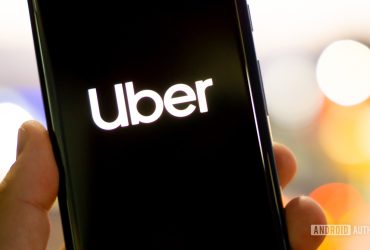
Leave a Reply
View Comments